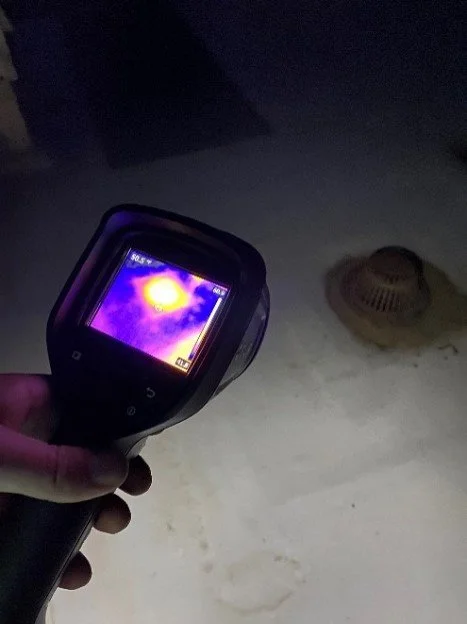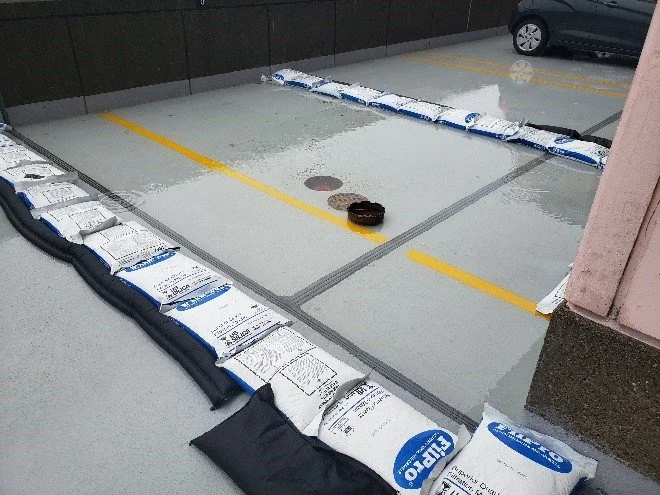Part 3: Seeing What Others Miss: Roofing Inspections and Flood Testing
The most dangerous problems are often the ones you can't see.
Trapped moisture under a roof membrane. Tiny leaks in balcony waterproofing. Invisible insulation failures that sabotage energy performance.
At GRLA, we specialize in seeing the unseen — using infrared technology and flood testing to validate critical building systems before they fail.
In this post, we’ll cover:
Infrared roofing inspections (ASTM C1153) to detect hidden moisture and insulation defects
Flood testing (ASTM D5957) to prove waterproofing integrity for roofs, balconies, and podiums
Because what you don't know will hurt you.
ASTM C1153 — Look Beneath the Surface: Roofing Infrared Inspections
Not all building envelope problems are visible. Roofing systems, in particular, can hide significant moisture and insulation failures that are invisible to the naked eye.
That’s why GRLA recommends infrared inspections under ASTM C1153. This non-invasive method detects trapped moisture, thermal anomalies, and insulation defects without damaging the roofing system.
Why it Matters:
Pinpoints hidden roofing issues early.
Prevents widespread moisture damage and loss of insulation performance.
Supports energy efficiency by ensuring proper thermal control.
By using infrared technology, GRLA helps owners and project teams stay ahead of potential roofing failures — protecting both the building and the bottom line.
ASTM D5957 — Put It to the Test: Flood Testing for Roofing and Balconies
When it comes to waterproofing, trust but verify. That’s where flood testing (ASTM D5957) comes in.
Flood testing subjects critical surfaces like flat roofs, balconies, and coating systems to real-world water exposure — simulating heavy rain and pooling conditions to verify true waterproofing integrity.
Why it Matters:
Confirms waterproofing performance under real conditions.
Reduces the risk of leaks and water damage after occupancy.
Provides peace of mind before turnover or warranty initiation.
At GRLA, we believe it’s better to find leaks in a controlled test than after tenants have moved in. Flood testing ensures that what was designed to be waterproof truly is — before it’s too late.
A roof or balcony can look flawless on Day One — but harbor hidden issues that show up months (and lawsuits) later.
That's why smart teams invest in deeper testing now, rather than expensive remediation later.
At GRLA, we help you catch the silent failures before they become headline problems.
It’s not just about building — it’s about building smarter, stronger, and with confidence.
Hidden roofing failures and waterproofing defects don’t have to catch you by surprise.
Talk to GRLA’s Building Envelope Sciences team about how infrared inspections and flood testing can safeguard your project from the inside out.
Final Thoughts – Why Comprehensive Field Testing Pays Off
Building envelopes are complex systems — and even small vulnerabilities can have big consequences. While the whole building air test is a necessary starting point, it doesn’t tell the whole story.
GRLA advocates for a smarter, more comprehensive approach to envelope quality assurance. Through targeted field testing — from air leakage diagnostics to infrared roof inspections — we help project teams catch issues early, protect energy performance, and extend building life.
Investing in thorough envelope testing results in:
Fewer costly repairs.
Better indoor environmental quality.
Longer-lasting, higher-performing buildings.
Higher owner and occupant satisfaction.
In construction, early intervention is the key to long-term success.
At GRLA, we don't just design high-performing envelopes — we help ensure they perform as intended.


